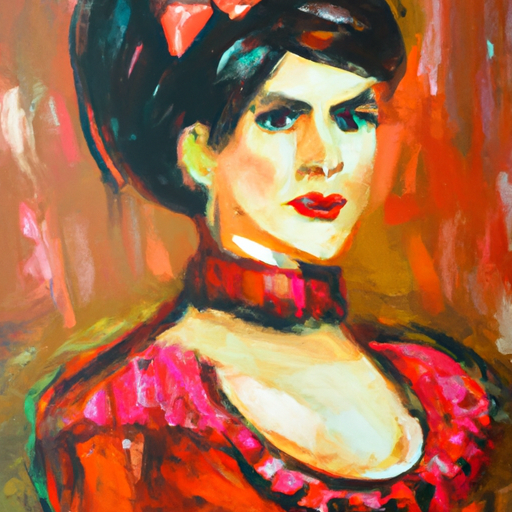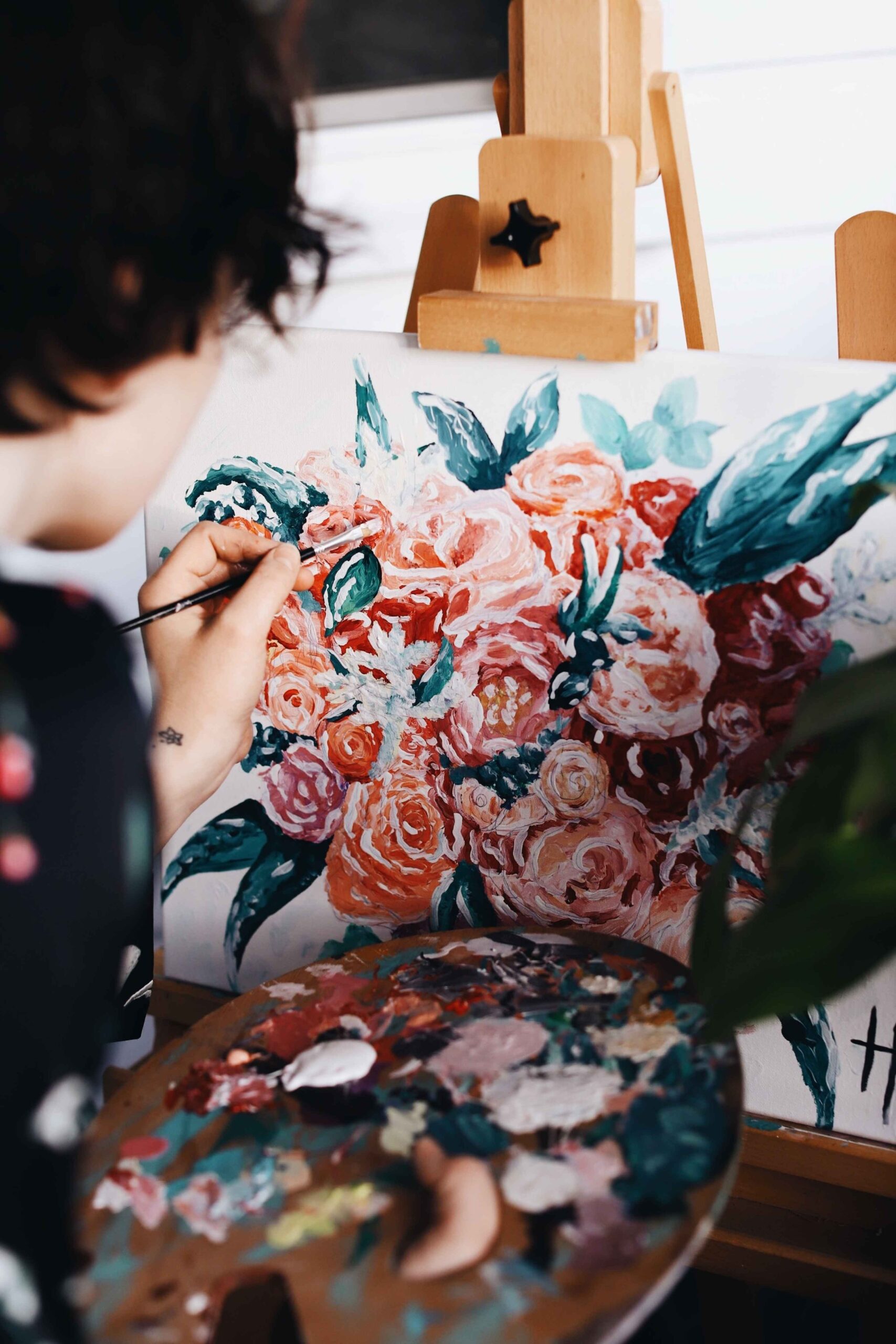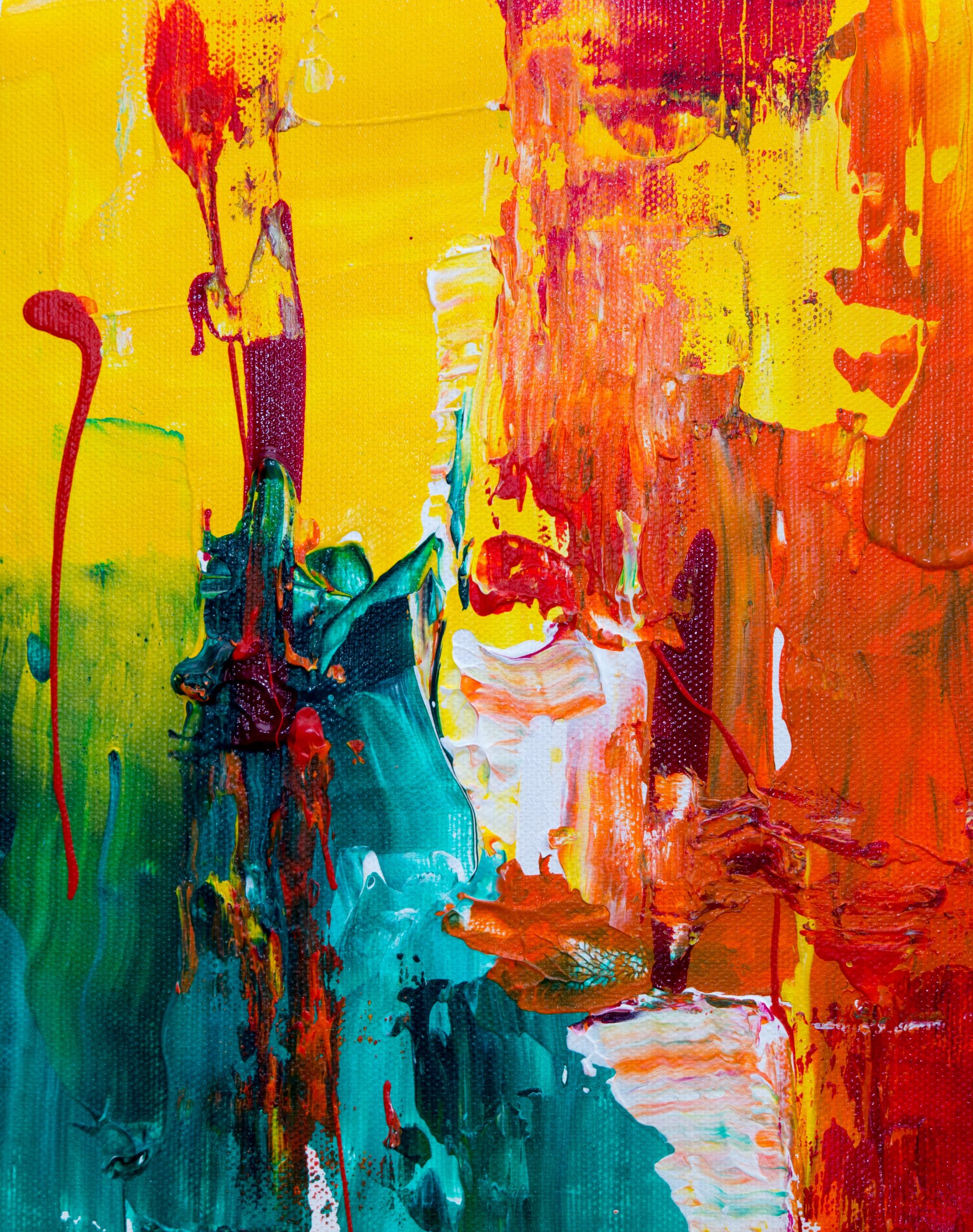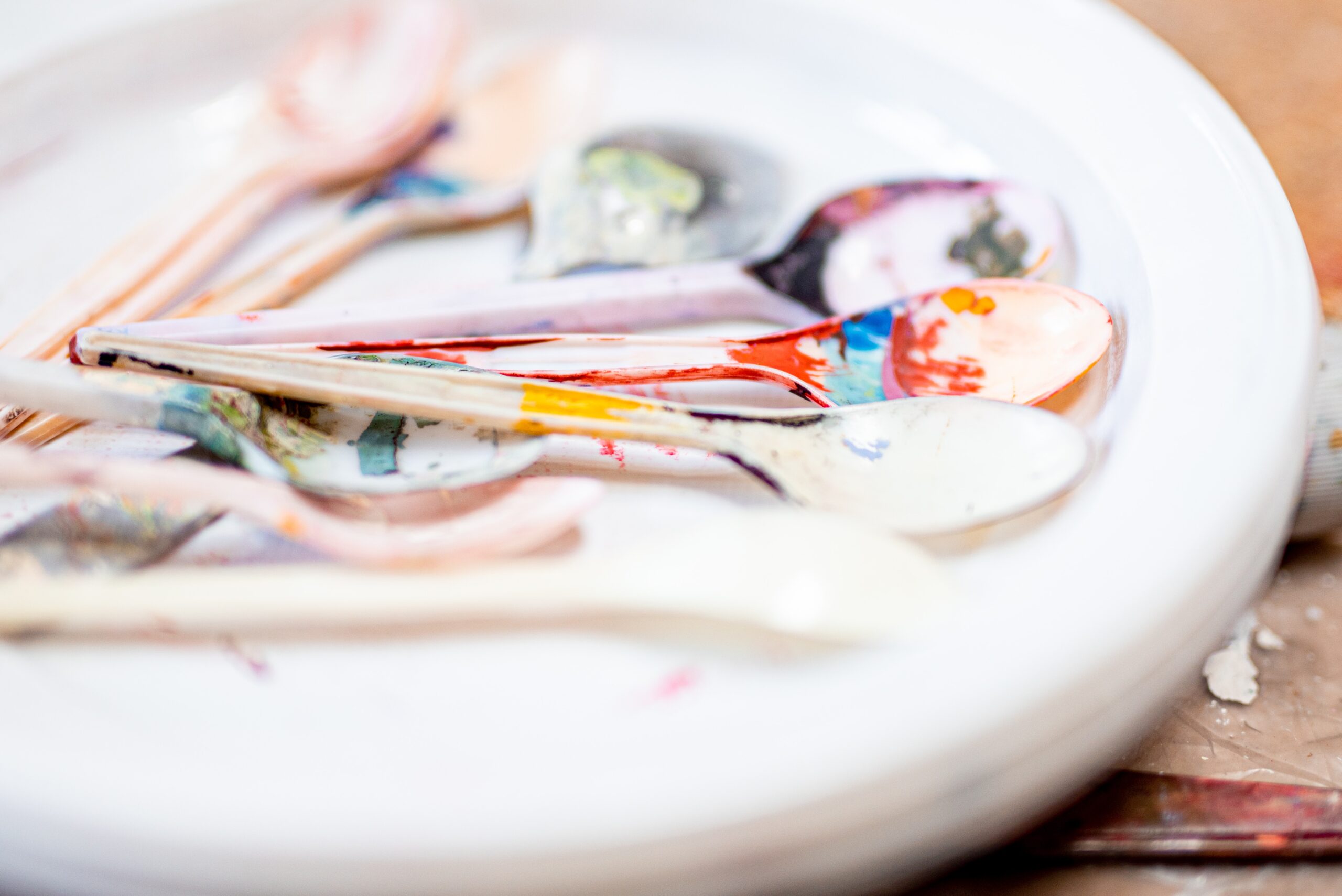Are you interested in learning how to create stunning portraits using acrylic paint? Look no further! In this article, you will discover the step-by-step process and techniques on how to paint beautiful portraits in acrylic. From selecting the right materials to capturing the essence of your subject’s features, this guide will provide you with valuable tips and tricks to enhance your portrait painting skills. Get ready to unleash your creativity and bring your subjects to life on canvas!

Choosing the Right Materials
When it comes to painting portraits in acrylic, one of the first things you need to consider is choosing the right materials. The quality and characteristics of the painting tools and materials can greatly affect the final outcome of your artwork. This section will guide you through selecting the acrylic paints, choosing the appropriate canvas or surface, and gathering the necessary brushes and tools.
Selecting the Acrylic Paints
Acrylic paints come in different brands, colors, and consistencies. It’s important to choose paints that have good pigment load and are lightfast, meaning the colors won’t fade over time. Look for artist-grade acrylic paints as they generally have higher pigment concentration and provide better coverage. Also, consider the type of portrait you are painting and select a color palette that suits your subject. For realistic skin tones, you will need a range of colors that can be mixed to achieve the desired hues.
Choosing the Canvas or Surface
The choice of canvas or surface is another important factor to consider. canvas is a popular choice for painting portraits due to its texture and durability. You can choose either stretched canvas, which is ready to hang, or canvas boards if you prefer to work on a flat surface. Alternatively, you can explore other options such as wood panels, watercolor paper, or acrylic paper. Each surface has its own unique characteristics, so experiment with different options to find the one that works best for you.
Gathering the Necessary Brushes and Tools
Having the right brushes and tools is crucial for achieving the desired effects in your portrait. For acrylic painting, it’s recommended to have a variety of brushes with different shapes and sizes. Some essential brushes for portraits include round brushes, flat brushes, and small detail brushes. Additionally, you may find palette knives useful for mixing colors and creating texture. Other tools you might need include a palette for mixing colors, a water container for cleaning brushes, and a rag or paper towels for blotting excess paint.
Preparing the Workspace
Before you start painting, it’s important to prepare your workspace properly. By setting up your painting area, organizing your materials, and protecting your work surface, you can ensure a smooth and enjoyable painting process.
Setting Up Your Painting Area
Find a well-lit area where you can comfortably work on your painting. Natural light is ideal, but if that’s not possible, make sure you have adequate artificial lighting. Arrange your easel, table, or workspace in a way that allows you to have a good view of your reference photo and easy access to your materials. Consider the ergonomics of your setup as well, ensuring that you can paint for extended periods without straining your body.
Organizing Your Materials
Take the time to organize your materials before you begin painting. This will save you time and frustration later on. Arrange your paints in a logical order, grouping similar colors together. Set out your brushes and tools within easy reach. If you have a large collection of paints, consider creating a color chart or swatch to help you quickly identify the colors you need. It’s also helpful to have a notebook or sketchbook nearby to jot down any notes or color mixing ratios as you go along.
Protecting Your Work Surface
Acrylic paints can be messy, so it’s important to protect your work surface. Place a plastic or vinyl tablecloth, old newspapers, or a drop cloth over your table or workspace. This will prevent any accidental spills or drips from damaging your furniture or floor. Having a clean and protected work surface will not only make your painting experience more enjoyable, but it will also help preserve the longevity of your materials.
Preparing the Reference Photo
The reference photo you choose plays a crucial role in the success of your portrait painting. By selecting an appropriate photo, adjusting the composition, and scaling and transferring the image, you can ensure an accurate representation of your subject.
Selecting an Appropriate Photo
Choose a reference photo that clearly shows the features and details of your subject. Ideally, the photo should have good lighting and sharp focus. Make sure the facial expression and pose reflect the mood or character you want to capture. If you’re working from a printed photo, consider enlarging it to make it easier to see the details. If you’re using a digital photo, make sure to zoom in and examine the image closely to ensure it meets your requirements.
Adjusting the Composition
Sometimes, the composition of the photo may need some adjustments to create a more balanced and visually pleasing artwork. Use a ruler or grid system to identify any potential issues with the composition, such as the placement of the eyes or the levelness of the features. You can make these adjustments by cropping or editing the photo digitally, or by sketching directly on the reference photo to plan your composition.
Scaling and Transferring the Image
Once you have finalized the composition, you’ll need to transfer the image onto your canvas or surface. One common method is to use a grid system. Divide your reference photo and canvas into equal-sized grids, and then transfer the details from each grid square to its corresponding square on the canvas. Another option is to use a projector or a lightbox to trace the image onto your surface. Choose the method that you feel most comfortable with and that works best for you.
Basic Sketching Techniques
Before diving into the painting process, it’s important to establish a solid foundation with the basic sketch. By blocking in the basic shapes, paying attention to proportions and using measuring techniques, and gradually adding details to the sketch, you can create an accurate and well-structured portrait.
Blocking in the Basic Shapes
Start by blocking in the basic shapes of the head and facial features. Use light and loose lines to outline the general proportions and placement of the features. Focus on capturing the overall shape of the head, the position of the eyes, nose, and mouth, and the angles of the face. This step is crucial as it sets the foundation for the rest of the painting.
Proportions and Measuring Techniques
To ensure accurate proportions, use measuring techniques such as sighting and comparative measuring. Sighting involves using a pencil or brush as a measuring tool, holding it up and comparing the lengths or angles of different features to each other. Comparative measuring involves comparing the size and position of one feature in relation to another. Take the time to measure and compare the distances and angles between features to maintain accuracy in your sketch.
Adding Details to the Sketch
Once you’re satisfied with the overall proportions and structure of the head, start adding more details to the sketch. Pay close attention to capturing the unique characteristics of your subject, such as the shape of the eyes, the curve of the lips, and the contours of the face. Gradually refine your lines and shapes, making adjustments as needed. Remember, this is just the sketching stage, so don’t worry about being too precise. The goal is to create a solid foundation for your painting.

Color Mixing and Palette Setup
Understanding color theory and how to mix colors is essential for creating realistic and dynamic portraits. By familiarizing yourself with the color wheel, practicing mixing flesh tones, and creating a balanced color palette, you can achieve harmonious and lifelike colors in your artwork.
Understanding the Color Wheel
The color wheel is a useful tool that helps artists understand how colors relate to each other. It consists of primary colors (red, blue, and yellow), secondary colors (orange, green, and purple), and tertiary colors (mixtures of primary and secondary colors). By studying the color wheel, you can learn about complementary colors (opposite on the wheel), analogous colors (next to each other on the wheel), and how different color combinations create different moods and effects in your painting.
Mixing Flesh Tones
Achieving realistic skin tones can be challenging, but with practice and experimentation, you can master it. Start with a basic palette of primary colors (red, blue, and yellow) and white. By adding small amounts of red and yellow to white, you can create a warm flesh tone. For shadows, mix blue and red with white. Experiment with different ratios and combinations to achieve the desired skin tone. Remember that skin tones vary greatly depending on the individual, so don’t be afraid to adjust the colors to match your subject.
Creating a Balanced Color Palette
A balanced color palette is essential for creating harmony and unity in your portrait. Start by selecting a range of colors that complement your subject and reference photo. Consider the temperature (warm or cool) and the intensity (saturation) of the colors you choose. Think about the overall mood and atmosphere you want to convey in your artwork. Aim for a combination of colors that work well together and can be mixed to achieve a variety of tones and shades. Having a well-organized and clean palette will help you easily identify and use the colors you need while painting.
Building Layer by Layer
Building your portrait layer by layer allows you to create depth and dimension in your artwork. By blocking in the initial layers, developing the background, and gradually building up the portrait, you can achieve a realistic and visually striking result.
Blocking in the Initial Layers
Start by applying thin layers of paint to block in the main shapes and values of your portrait. Use a large brush and work with a limited color palette. Focus on establishing the light and dark areas, as well as the overall shape and proportions of the features. Keep the brushwork loose and don’t worry about details at this stage. This initial layer will serve as a guide for further refinement.
Developing the Background
Once the initial layers are dry, it’s time to develop the background. Consider the composition and the mood you want to convey. You can use complementary colors to create contrast and make your subject stand out, or choose harmonious colors that complement the portrait. Experiment with different techniques such as glazing, dry brushing, or even adding texture to create interest and depth in the background.
Gradually Building Up the Portrait
With the foundation and background in place, it’s time to start building up the details and values in your portrait. Gradually add more layers of paint, focusing on capturing the subtle transitions and nuances in color and value. Use smaller brushes for more precision and work with a lighter touch. Pay attention to the highlights, shadows, and mid-tones of the skin, as well as the intricate details of the facial features. Take your time and be patient as you build up the layers, allowing each layer to dry before adding the next.

Creating Realistic Skin Tones
One of the most important aspects of painting portraits is capturing realistic skin tones. By understanding light and shadows on skin, creating subtle skin textures, and utilizing blending and layering techniques, you can bring your portrait to life.
Understanding Light and Shadows on Skin
Light and shadows play a crucial role in creating depth and dimension in your portrait. Observe your reference photo carefully and analyze how light falls on the skin. Identify the areas of highlights, mid-tones, and shadows. Use lighter colors for the highlights, darker colors for the shadows, and mid-tones to bridge the two. Consider the direction of the light source and how it interacts with the contours of the face. Gradually build up the layers, using thin glazes or opaque paint to create the desired effect.
Creating Subtle Skin Textures
Skin has a variety of textures, such as pores, wrinkles, and blemishes. By incorporating these subtle details into your portrait, you can add realism and character to your artwork. Use small brushes or even a fine liner brush to create delicate lines and dots that simulate pores and skin texture. Pay attention to the areas around the eyes, nose, and mouth, as well as the forehead and cheeks. Be mindful of not overdoing it, as too much texture can distract from the overall portrait.
Blending and Layering Techniques
Blending and layering techniques are essential for achieving smooth and seamless transitions in your portrait. Use a soft brush or your fingertip to blend the edges between different tones and colors. Work with thin glazes or translucent layers to gradually build up the values and create a sense of depth. Consider using different brush techniques such as dry brushing, stippling, or feathering to create specific textures or effects. Experiment with different mixtures of colors and brushstrokes to achieve the desired results.
Adding Depth and Dimension
To make your portrait come alive, it’s important to add depth and dimension. By creating highlights and shadows, using different values to enhance depth, and adding details and fine-tuning, you can achieve a three-dimensional and realistic effect.
Creating Highlights and Shadows
Highlights and shadows are crucial for creating volume and form in your portrait. Identify the areas of the face that catch the most light, such as the forehead, cheekbones, and tip of the nose. Use a lighter color than the base tone to create the highlights, and gradually build up the intensity and brightness. Similarly, identify the areas of the face that are in shadow, such as the hollows of the cheeks, the sides of the nose, and the underside of the chin. Use a darker color to create the shadows, gradually building up the depth and contrast.
Using Different Values to Enhance Depth
Values refer to the range of lights and darks in your painting. By utilizing a wide range of values, you can create a sense of depth and dimension in your portrait. Pay attention to the subtle transitions between different values, ensuring that there is enough contrast between the lightest and darkest areas. Use a combination of blending, layering, and dry brushing techniques to achieve smooth value transitions. Study your reference photo carefully and compare the values to ensure accuracy and realism in your painting.
Adding Details and Fine-tuning
Once you have established the general values and forms of your portrait, it’s time to pay attention to the small details and fine-tune your painting. Focus on areas such as the eyes, eyebrows, lips, and hairline. Use smaller brushes or even a fine liner brush to add the intricate details and refine the edges. Continuously compare your painting to the reference photo to ensure accuracy and make any necessary adjustments. Be patient and take your time with this step, as it can greatly enhance the overall realism and impact of your portrait.

Focusing on Facial Features
The facial features are often the focal point of a portrait. By paying close attention to painting the eyes, capturing the expression and emotion, and painting the lips and noses with care, you can bring your subject to life.
Painting the Eyes
Eyes are often referred to as the windows to the soul and capturing their essence is important in portrait painting. Start by blocking in the basic shape of the eyes using light washes of color. Then, gradually build up the layers to add depth, starting with the iris and pupil, and finishing with the highlights and reflections. Pay attention to the details of the eyelashes, eyebrows, and surrounding areas. Use smaller brushes to add fine details, such as the glimmer of light or the texture of the iris. Remember, the eyes provide an opportunity to convey emotions, so focus on capturing the expression and personality of your subject.
Capturing the Expression and Emotion
Beyond just the facial features, capturing the overall expression and emotion of your subject is essential for creating a compelling portrait. Observe your reference photo closely and analyze the subtle shifts in muscle tone, the positioning of the features, and the unique expressions that make your subject who they are. Pay attention to the eyebrows, mouth, and wrinkles, as these features can convey a range of emotions. Use your brushwork and color choices to amplify the mood and expression you want to capture. Take your time during this stage to ensure that the essence of your subject is portrayed accurately.
Painting Lips and Noses
The lips and nose are two features that can greatly impact the likeness and realism of a portrait. Start by blocking in the basic shapes and values of these features, using lighter colors for highlights and darker colors for shadows. Observe the subtle nuances of the lips, such as the curvature, the highlights, and the transitions in color. Use smaller brushes to add details, such as the shape of the cupid’s bow or the texture of the lips. Similarly, pay attention to the unique characteristics of the nose, such as the bridge, nostrils, and the soft shadows that define its shape. Gradually build up the layers, adding more depth and details as you go along.
Final Touches and Detailing
As you near the completion of your portrait, it’s time to focus on the final touches and detailing that will bring your artwork to its full potential. By refining the edges and outlines, enhancing the hair and background, and signing and sealing your artwork, you can add the finishing touches that will make your portrait shine.
Refining the Edges and Outlines
To create a polished and finished look, carefully refine the edges and outlines of your portrait. Use a small brush and a steady hand to clean up any stray lines or smudges. Ensure that the transitions between different areas are smooth and clean, paying close attention to the edges of the face, eyes, and other features. Take the time to make any necessary adjustments or corrections to ensure accuracy and realism. This final step can greatly enhance the overall quality of your portrait.
Enhancing the Hair and Background
The hair and background can greatly contribute to the overall impact of your portrait. Use a combination of brush techniques, such as dry brushing, stippling, or glazing, to create the texture and depth of the hair. Pay attention to the direction and flow of the strands, as well as the highlights and shadows. Similarly, consider how the background complements your subject and adds to the mood of the painting. Add any necessary details or adjustments, ensuring that the background enhances rather than distracts from the focal point.
Signing and Sealing Your Artwork
Once you’re satisfied with your portrait, don’t forget to sign and seal your artwork. Sign your name in a discreet and appropriate location, using a small brush or a fine liner brush. Consider using a contrasting color that complements the overall color scheme of your painting. After signing, it’s important to protect your artwork by applying a suitable varnish or sealant. This will not only enhance the longevity and durability of your painting but also give it a professional finish. Follow the instructions provided by the manufacturer of your chosen varnish or sealant for best results.
By following these comprehensive steps and guidelines, you can develop your skills and techniques in painting portraits in acrylic. Remember, practice is key, so don’t be discouraged if your first attempts don’t turn out exactly as you envisioned. Enjoy the process of creating and allow yourself to experiment and learn along the way. With time and dedication, you will be able to master the art of painting stunning and lifelike portraits in acrylic. Happy painting!




